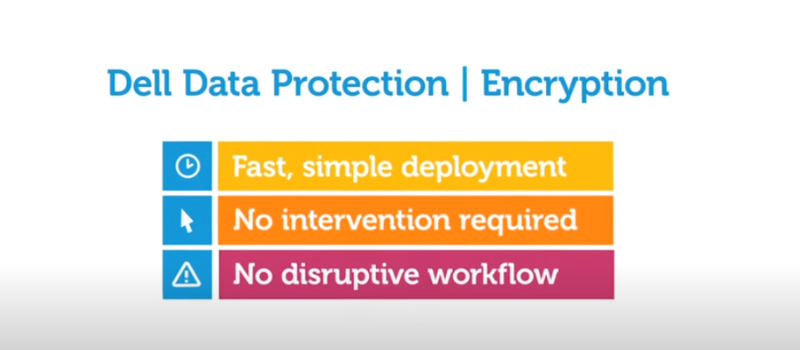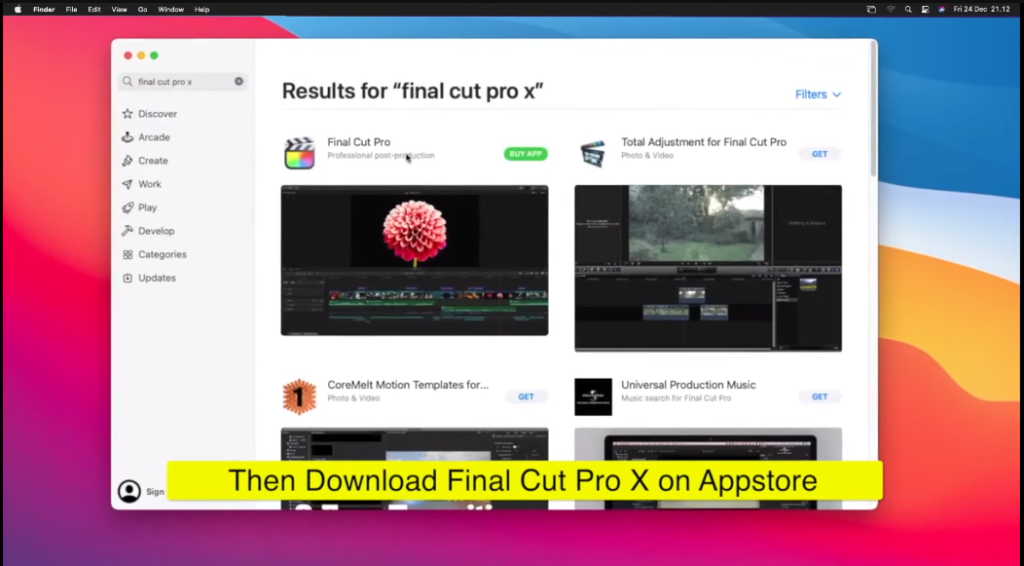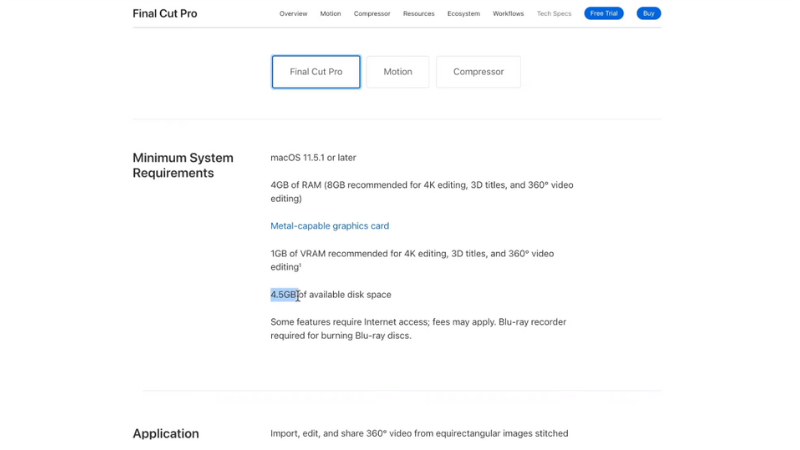Overview of Dell Data Protection Encryption

Dell Data Protection Encryption is a comprehensive encryption solution that helps protect data on laptops, desktops, external media, and self-encrypting drives. It uses advanced encryption algorithms to secure data stored on devices and prevent unauthorized access in case of loss or theft. The solution provides centralized management and reporting capabilities, making it easy for administrators to manage encryption policies, monitor compliance, and respond to security incidents.
Introduction to Final Cut Pro X

Final Cut Pro X is a professional video editing software developed by Apple Inc. It offers a wide range of features and tools for editing, colour grading, audio mixing, and visual effects. The software is designed for professional video editors, filmmakers, and content creators who want to create high-quality videos with ease. Final Cut Pro X has a user-friendly interface that allows users to work efficiently and quickly. It supports a wide range of video formats and resolutions, making it a versatile tool for any video project.
Getting Started with Final Cut Pro X

Final Cut Pro X is a powerful video editing software that can help you create professional-quality videos. Here are some steps to help you get started:
1. Install Final Cut Pro X on your computer. You can purchase it from the Mac App Store.
2. Open Final Cut Pro X and create a new project. You can choose the video resolution and frame rate for your project.
3. Import your video footage into Final Cut Pro X. You can import video files from your computer or from external storage.
System Requirements for Running Final Cut Pro X

The system requirements for running Final Cut Pro X are as follows:- macOS 10.14.6 or later
– 4GB of RAM (8GB recommended for 4K editing, 3D titles, and 360° video editing)
– OpenCL-capable graphics card or Intel HD Graphics 3000 or later
– 256MB of VRAM (1GB recommended for 4K editing, 3D titles, and 360° video editing)
Importing Encrypted Media Files into Final Cut Pro X
To import video files into Final Cut Pro X, you can either select the files from your computer or from external storage devices. Simply click on the “Import Media” button in the top left corner of the interface, then choose the files you want to import. It’s important to note that Final Cut Pro X has specific system requirements that need to be met in order to run the software smoothly.
Handling Media Files with Dell Data Protection Encryption
When working with media files that have been encrypted with Dell Data Protection Encryption, you will need to enter the decryption password in order to access the files. Once you have entered the password, you can then import the files into Final Cut Pro X using the same process as with any other video files. However, it’s important to ensure that your computer meets the necessary system requirements for both Final Cut Pro X and Dell Data Protection Encryption to ensure smooth and efficient performance.
Creating Projects And Events With Encrypted Media
To create projects and events with encrypted media in Final Cut Pro X, you will first need to decrypt the media using a program such as Dell Data Protection Encryption. Once the files are decrypted, you can import them into Final Cut Pro X and create your projects and events as you normally would. It’s important to keep in mind that any changes made to the decrypted media will need to be re-encrypted before they can be stored or shared securely.
Organizing And Managing Encrypted Projects And Events
To organize and manage encrypted projects and events in Final Cut Pro X, you can use the software’s built-in organizational tools. You can create folders and subfolders to keep your projects and events organized, and you can use keywords and tags to help you quickly find specific files. You can also use Final Cut Pro X’s sharing features to securely share your encrypted projects and events with others.
Editing Techniques with Dell Data Protection Encryption
To edit encrypted projects and events using Dell Data Protection Encryption, you will need to first decrypt the files using the appropriate decryption key. Once the files are decrypted, you can use standard editing techniques in your preferred video editing software. When you are finished editing, you can re-encrypt the files using Dell Data Protection Encryption to ensure they remain secure. It is important to always keep the decryption key safe and secure to prevent unauthorized access to your encrypted files.
Essential Editing Functions With Encrypted Media
To perform essential editing functions with encrypted media, you will need to follow a few steps. First, you will need to decrypt the media using the appropriate decryption key. Once the media is decrypted, you can use standard editing techniques in your preferred editing software. This may include trimming, cutting, adding effects, and adjusting audio levels. After you have completed your edits, it is important to re-encrypt the media using a secure encryption method.
Advanced Editing Techniques For Encrypted Projects
When working with encrypted projects, it is important to take extra precautions to ensure the security of the media. One advanced technique is to use a non-linear editing system that supports encrypted media natively. This can help to simplify the process of decrypting and re-encrypting the media. Another technique is to use a secure cloud-based editing platform that allows you to work on the media without ever downloading it to your local machine.
Applying Effects and Transitions to Encrypted Media
When working with encrypted media, applying effects and transitions can be a bit more challenging. One approach is to use a non-linear editing system that supports encrypted media natively and has built-in tools for applying effects and transitions. Another option is to decrypt the media temporarily, apply the desired effects and transitions, and then re-encrypt the media before saving it. Using effects and transitions with Dell Data Protection Encryption
Editing Audio Tracks of Encrypted Media
When editing audio tracks of encrypted media, it is important to use a non-linear editing system that supports encrypted media natively. This will ensure that the audio tracks remain encrypted throughout the editing process. Additionally, it is recommended to use a secure and encrypted storage solution for the audio files to maintain their confidentiality. It is also important to follow any applicable security protocols and guidelines when working with encrypted audio tracks to ensure the protection of sensitive information.
Troubleshooting Common Audio Editing Issues
When encountering common audio editing issues, there are several troubleshooting steps that can be taken. First, if there is no sound, check that the audio track is not muted and that the volume is turned up.
If the sound quality is poor, check the recording settings and try adjusting the microphone placement or using a better-quality microphone.
If there is unwanted background noise, try using noise reduction tools or filters.
Exporting Encrypted Videos from Final Cut Pro X
To export encrypted videos from Final Cut Pro X, you can follow this steps:
1. Open the project you want to export and go to File > Share > Master File.
2. In the Master File Export window, select the format you want to export the video in.
3. Click on the “Options” button to open the Export Settings window.
4. In the Export Settings window, go to the “Video” tab and select the “Video Codec” you want to use.
5. Scroll down to the “Security” section and check the box next to “Require Password to Play.
6. Enter a password in the “Password” field and confirm it in the “Verify” field.
7. Click on “OK” to close the Export Settings window.
8. Back in the Master File Export window, choose a destination for the exported video and click on “Save”.
Frequently Asked Questions (FAQs)
What is Dell Data Protection Encryption compatible with Final Cut Pro X?
Dell Data Protection Encryption is a software that provides advanced encryption and security features to protect sensitive data. It is not directly compatible with Final Cut Pro X, but you can use it to encrypt and secure video files exported from Final Cut Pro X. By requiring a password to play the video, you can ensure that only authorized users can access the content.
Can I edit encrypted media files directly in Final Cut Pro X?
No, you cannot edit encrypted media files directly in Final Cut Pro X. You will need to first decrypt the files using Dell Data Protection Encryption or another decryption software, and then import them into Final Cut Pro X for editing. After editing, you can then export the video files and encrypt them again using the encryption software.
How does Dell Data Protection Encryption impact video editing performance?
Dell Data Protection Encryption can impact video editing performance by adding an extra layer of security to the media files, which can slow down the process of decrypting and encrypting the files. However, the impact on performance will depend on the size of the media files and the processing power of the computer being used for video editing. It is recommended to use a computer with high processing power and sufficient RAM to minimize any potential impact on performance.
Is it possible to remove Dell Data Protection Encryption from a video file?
If you have encrypted a video file using Dell Data Protection Encryption, you may be able to remove the encryption by using the decryption tool provided by Dell. It is important to note that removing encryption from a file without authorization may be illegal in some jurisdictions, and may also compromise the security of the file. It is recommended to seek professional advice or contact Dell support for assistance with removing encryption from a file.
What are the recommended encryption settings for optimal editing experience?
The recommended encryption settings for optimal editing experience would depend on the specific software and tools being used for editing. Generally speaking, it is recommended to use encryption settings that provide a balance between security and performance. This may include using a strong encryption algorithm, such as AES, with a key length of at least 128 bits. It is also important to use encryption settings that are compatible with the software and tools being used for editing, to avoid any compatibility issues or performance slowdowns.
Conclusion
In conclusion, when it comes to editing encrypted files, it is important to consider the specific software and tools being used, as well as the encryption settings being applied. By using a strong encryption algorithm and compatible settings, you can ensure the security of your data while still maintaining optimal performance.
